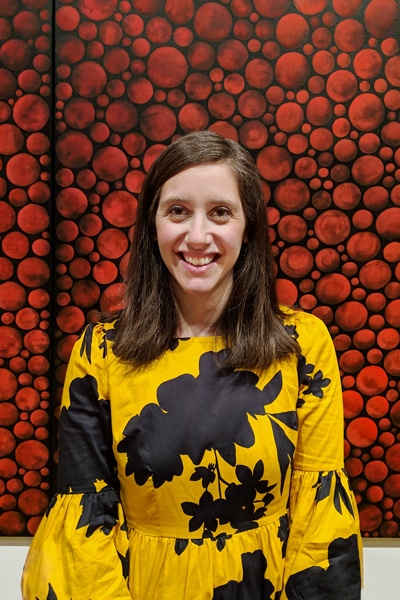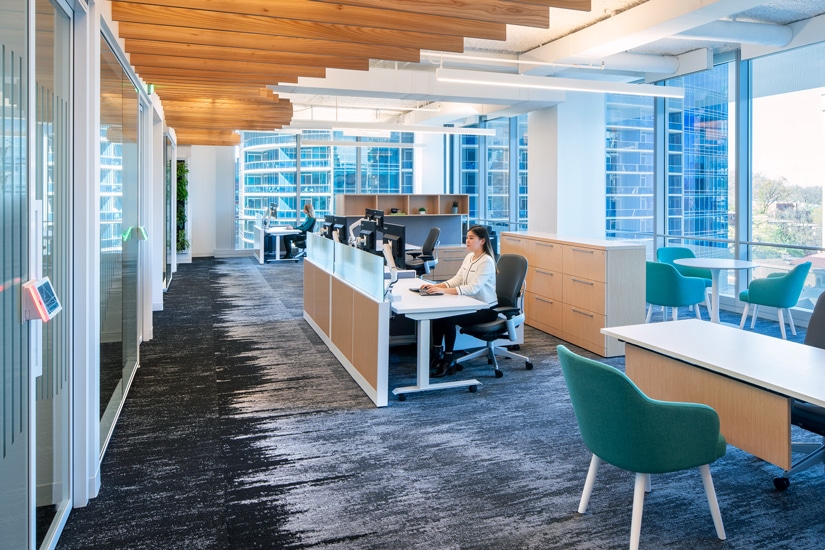|
Getting your Trinity Audio player ready...
|
As the healthcare industry continues to evolve at a rapid pace, prioritizing the patient remains the key to success not only in care but also in developing relationships and fostering communication between patient and provider. This means that the ways primary care facilities look and function have to keep up with advances in technology and design.

The traditional clinic model where a patient waits to be served and then moves about various rooms to meet with different providers just doesn’t cut it anymore, says Elizabeth Fennell, director of architecture and workplace design for Louisville-based health and well-being company, Humana.
So what should the clinic of today look like? “The primary change now is that you check in and have a short wait, go into the exam room, then everyone comes to you,” Fennell explains. Humana, which employs nearly 50,000 people, serves millions of health plan members, and cares for thousands of seniors in its primary care centers, has expanded its Conviva Care Center locations throughout Texas and Florida, as well as its Partners in Primary Care clinics in a number of major metropolitan areas.
Humana looks to its “whole person care” approach in the planning and design of newer clinic locations which aim at providing a better experience to patients, says Fennell, who has been with the company since 2013. Humana is about delivering care, ease, and personalization to its members. It aims to provide a better experience by focusing on the many interconnected conditions of its members. Specialists are then brought together which allows for better communication among staff and patients.
This holistic approach to member care starts within the exam room, where Humana has swapped the traditional clinical exam bed for a lounge chair (which can still be converted to an exam bed if needed) and placed computer displays at eye-level, allowing doctors to review and discuss any findings or research with a patient in a transparent manner.

“Most of your appointment is a conversation between you and your doctor,” Fennell notes of the typical experience at a primary care appointment. “Changing from an exam bed to a lounge chair means that you’re sitting eye-to-eye with the doctor. This encourages more transparent conversations and decreases much of the anxiety members feel in the presence of a doctor.”
Another big shift in clinic design has been in the way that doctors and medical staff communicate and interact with one another. Newer clinics feature “teamwork areas” which are intended to foster better collaboration, and subsequently, better patient care.
“It used to be that in traditional clinics, the operating model focused on the provider, who had a private office and was sequestered from the rest of the staff,” Fennell says. “But the change in the clinic is about collaboration and coming together to support a member’s entire health.”

“Most people have a diverse group of issues—it might be diabetes and high blood pressure, for example—and all of these things are really intertwined,” Fennell says. “And by bringing the care team together holistically, it means that they’re having conversations that they weren’t before.”
The theme of “whole person care” continues up the chain to Humana’s corporate offices in Louisville, Kentucky, where tens of thousands of employees work. Planning for such a large and diverse workforce presents numerous challenges but requires the need to be efficient while finding a balance.
Coming from the world of designing for small hedge fund offices in New York to a Fortune 500 company that employs 14,000 just at its corporate headquarters alone was a huge shift for Fennell.

“Humana is unique in the sense where you’ve got everything from primary care clinics to corporate offices, to call centers, to pharmacies,” Fennell says. “From a career perspective, it’s really been learning and understanding over these past seven years how [we can] support such a large, diverse company, and positively impact associates and members by figuring out what that balance is.”
It’s about finding out how to make a big impact and to do it fast. “Speed to market is really important because competition is so stiff,” Fennell says of the healthcare industry. This is where Humana’s whole person care helps the company stand out among a crowded pack and plan ahead for growth in both company size and patient needs. And at the heart of it all is a continued focus on collaboration among providers and its members.


